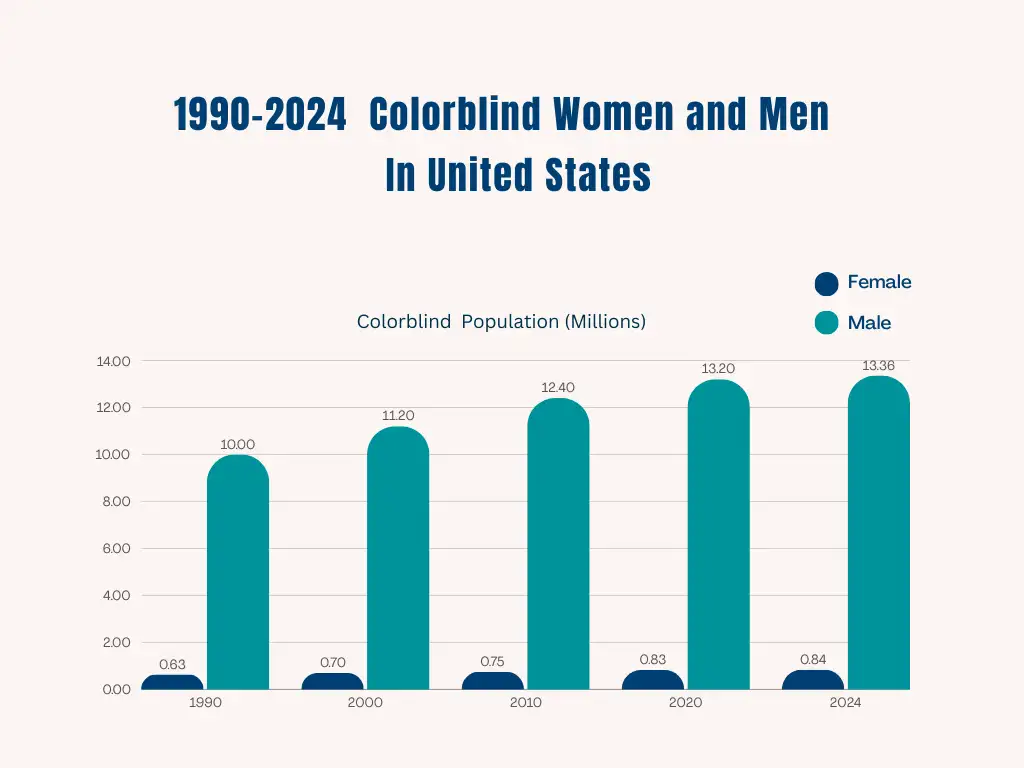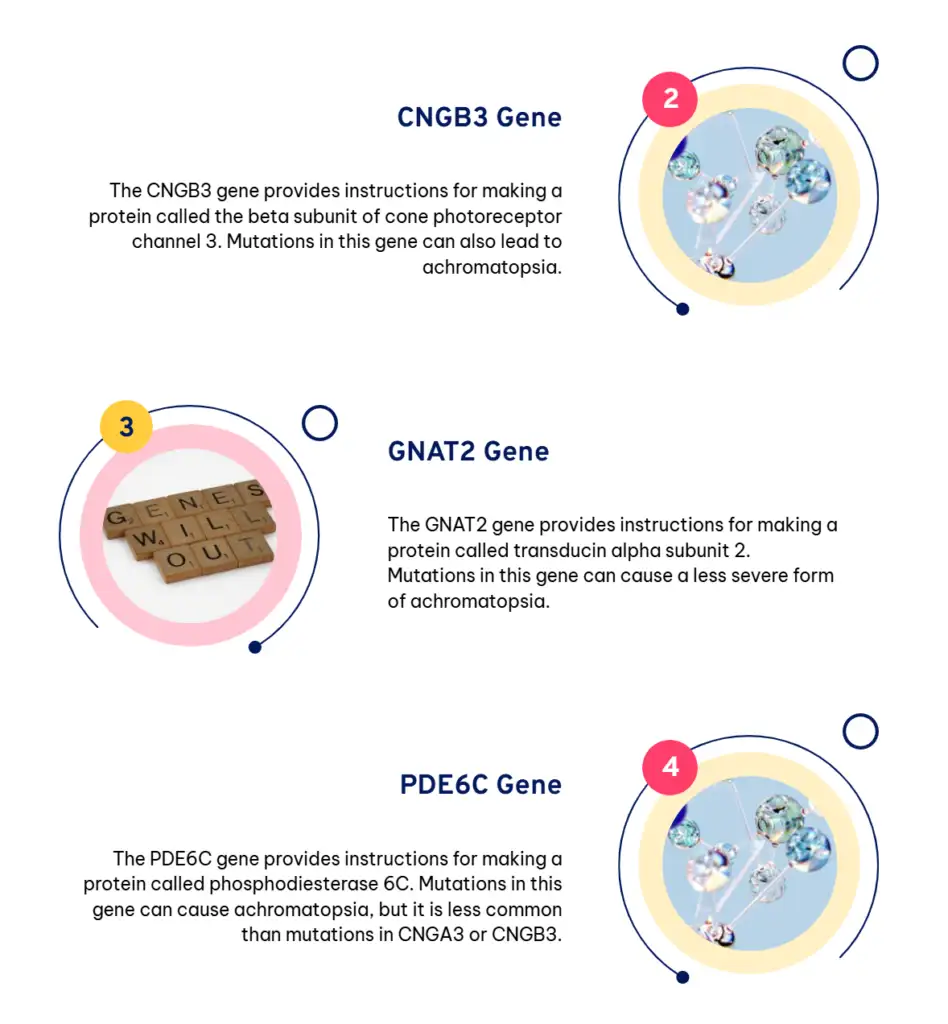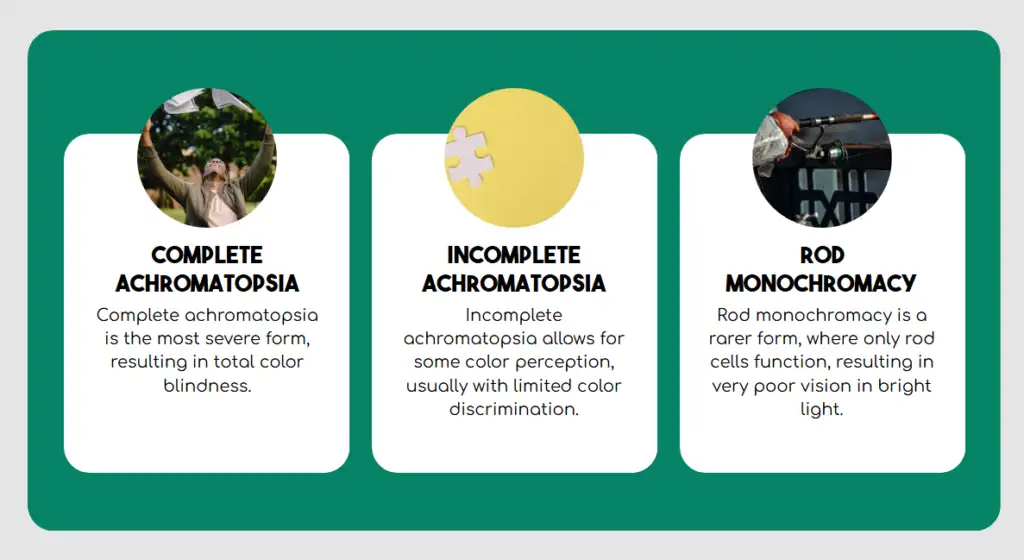Achromatopsia Contact Lenses: What You Need to Know
Contact lenses offer a helpful solution for those living with achromatopsia, a condition often referred to as true color blindness. Achromatopsia contact lenses can significantly reduce light sensitivity and improve visual comfort for patients. By filtering light and minimizing glare, these specially designed lenses enhance the quality of life for individuals who struggle with monochromacy.
Achromatopsia occurs when the cones in the retina, which are responsible for color vision, do not function properly or are completely absent. People with this condition rely heavily on rods, which work better in low light but do not perceive color. Custom contact lenses can aid in managing achromatopsia, providing a better visual experience by incorporating specific tints that reduce hemeralopia, a debilitating sensitivity to bright light.
These lenses come in various shades, with some designed to appear dark brown on the eyes to offer both functional and cosmetic benefits, as seen with the B30 and B60 options. Many find these lenses a good balance between aesthetics and function. By considering the needs of the achromatopsia community, companies are creating advanced solutions that support better visual acuity and comfort.
Key Takeaways
- Contact lenses reduce light sensitivity in achromatopsia.
- Monochromacy affects color perception due to cone malfunctions.
- Custom tints in lenses aid comfortable vision.
Understanding Achromatopsia
Achromatopsia is a vision disorder affecting cone cells in the retina, causing color blindness and light sensitivity. It is a rare, inherited condition impacting visual acuity and causing symptoms like nystagmus and low vision.
Definition and Symptoms
Achromatopsia is a rare vision disorder characterized by the absence of color vision. Individuals with this condition perceive the world mostly in black, white, and shades of gray. The disorder affects about 1 in 33,000 people in the U.S.

Common symptoms include light sensitivity, due to reduced or absent cone cells, and nystagmus, which is involuntary eye movement. People with achromatopsia also experience low vision, with increased difficulty seeing in bright environments. In some cases, individuals might experience rod monochromatism, where vision is solely dependent on rod cells.
Genetics of Achromatopsia

Achromatopsia is primarily an autosomal recessive disorder, meaning the condition occurs when an individual inherits two copies of a mutated gene, one from each parent. Several genes are linked to this condition, with one of the most common being the CNGA3 gene.

Mutations in this gene disrupt normal cone function, leading to complete achromatopsia. Affected genes impair the phototransduction process in cones, making it impossible for individuals to perceive color. Other genes like CNGB3, GNAT2, and PDE6C are also related to different variations of achromatopsia.
Types of Achromatopsia
Achromatopsia can be classified into several types based on the genes involved.

1. Complete Achromatopsia
Definition: Complete achromatopsia, also known as rod monochromacy, is a condition where individuals see the world entirely in shades of gray. This type results from a total absence of functional cone photoreceptors in the retina.
Symptoms:
- Total color blindness, perceiving only black, white, and gray.
- Severe light sensitivity (photophobia), making bright environments uncomfortable.
- Reduced visual acuity, often leading to difficulty seeing fine details.
Causes: Complete achromatopsia is usually inherited in an autosomal recessive pattern and can result from mutations in genes such as CNGB3, CNGA3, and others that are critical for cone function.
Impact: Individuals with complete achromatopsia often face challenges in environments with varying light levels and may require specialized sunglasses or visual aids to manage their sensitivity to light.
2. Incomplete Achromatopsia
Definition: Incomplete achromatopsia, sometimes referred to as blue cone monochromacy, allows individuals to perceive some colors, primarily blue, but they have significant difficulty distinguishing between reds and greens.
Symptoms:
- Limited color vision, with the ability to see some blue hues.
- Moderate light sensitivity, though not as severe as in complete achromatopsia.
- Visual acuity can vary, often better than in complete achromatopsia but still reduced compared to individuals with normal color vision.
Causes: This type is often linked to mutations affecting the function of the blue cones, while red and green cones may be non-functional. It is typically inherited in an X-linked recessive manner, affecting more males than females.
Impact: Individuals with incomplete achromatopsia can struggle with tasks that require color differentiation, such as reading color-coded information or interpreting traffic signals.
3. Rod Monochromacy
Definition: Rod monochromacy is a severe form of achromatopsia where only rod photoreceptors are functional. As a result, individuals experience a complete lack of color vision and rely solely on their rod cells for vision.
Symptoms:
- Total color blindness, perceiving only shades of gray.
- Extreme light sensitivity (photophobia), leading to discomfort in bright environments.
- Very low visual acuity, making it challenging to see fine details or recognize faces.
Causes: Rod monochromacy is primarily caused by genetic mutations that affect the development or function of cone cells, leading to their complete absence or dysfunction. It can be inherited in an autosomal recessive pattern.
Diagnosis and Testing
The diagnosis of achromatopsia involves multiple tests and evaluations to identify visual function and color perception challenges. Patients often undergo specific tests to ensure accurate diagnosis, focusing on evaluating their color vision and detailed retinal function.
Color Vision Testing
Color vision testing is crucial for identifying achromatopsia. Individuals with this condition are unable to perceive colors, experiencing total color blindness. The Ishihara test, a common color vision assessment, checks for color distinguishability. However, it may not fully capture achromatopsia as it is designed for more common color vision deficiencies.
More advanced tests assess the extent of color perception issues. These assessments help differentiate achromatopsia from other visual disorders. Tools like specialized images and patterns are often used to evaluate the patient’s responses to various colors and contrasts.
Clinical and Electrophysiological Tests
Clinical evaluation includes a comprehensive battery of tests. Visual acuity testing measures the clarity of vision, which is typically reduced in achromatopsia. A fundoscopic examination allows doctors to inspect the eye’s interior for damage or anomalies.
Advanced diagnostics like Optical Coherence Tomography (OCT) provide detailed images of the retina, revealing structural changes. One critical test in diagnosis is the Electroretinogram (ERG), which measures the electrical responses of cells in the retina to light, confirming retinal dysfunction present in achromatopsia. These combined clinical and electrophysiological tests help in forming a comprehensive view of the patient’s visual abilities.
Contact Lenses for Achromatopsia
Contact lenses for achromatopsia offer a range of benefits to improve visual experiences. These lenses aim to reduce light sensitivity and enhance visual comfort. They often come with various filter options to cater to individual needs.
Benefits of Tinted Contact Lenses
Tinted contact lenses are a key aid for individuals with achromatopsia. These lenses help by minimizing light sensitivity, also known as photophobia. This condition can make bright environments uncomfortable, and tinted lenses reduce glare significantly.
With improved visual comfort, people with achromatopsia can manage daily activities with less strain. The lenses also provide enhanced visual acuity by decreasing the amount of light entering the eyes. This can make a noticeable difference in environments with harsh lighting, allowing for a more comfortable vision.
Types of Specialized Contact Lenses
There are various types of specialized contact lenses available for achromatopsia. Red central contact lenses are designed to reduce the light that enters the eye, helping with bright light conditions. These are particularly effective for those who suffer from light sensitivity.
Another type is the achromatic soft contact lens, which provides a more neutral tint without distorting colors. For enhanced color discrimination, some lenses use a magenta filter. Companies like Colorkinds offer colorblind contact lenses, including options for red-green colorblindness.
Customization and Filter Options
Customization plays a crucial role in contact lenses for achromatopsia. Users can select lenses that best suit their individual visual needs and preferences. Many lenses offer custom filter colors to tailor the light filtration to the wearer’s comfort, improving their visual experiences.
Additionally, some lenses cater to specific needs, such as tinted glasses and specific color filters like magenta, which can assist with color discrimination challenges. Customization ensures that individuals receive the most benefit from their lenses, improving both day-to-day function and overall quality of life.
Management and Adaptations
Managing achromatopsia involves using various visual aids and making lifestyle changes to cope with symptoms like light sensitivity and low vision. People can benefit from using specialized tools and seeking support to enhance daily functioning and quality of life.
Low Vision Aids
For individuals with achromatopsia, low vision aids are essential tools. Reading glasses and optical magnifiers help with tasks requiring focus, while dark glasses reduce light sensitivity. Prism lenses and bifocals can address specific refractive errors.
Bioptic telescopes and telescope glasses offer improved visual acuity and can enhance the peripheral visual field for outdoor activities. Consulting a low vision optometrist ensures access to the best tools suited to each person’s needs. These aids assist in managing symptoms such as central scotoma and help maintain independence in daily activities.
Lifestyle Adjustments
Adjustments in daily life can help mitigate the effects of achromatopsia. Using low vision aids is critical, but environmental modifications also play a role. Installing window tints and using lights with adjustable brightness can decrease light exposure indoors.
People might also set up work or study spaces with high-contrast backgrounds to make reading easier. Wearing hats or visors outdoors further minimizes light exposure and discomfort. Regular check-ups with eye care professionals ensure that any refractive error or other eye-related issues are addressed promptly.
Coping Strategies and Support
Support from family and peer groups can significantly impact the well-being of someone with achromatopsia. Joining support groups provides opportunities to share experiences and tips, including using specific low vision aids.
Professional counseling can offer strategies for dealing with emotional challenges associated with vision impairments. Establishing a network of support can enhance coping mechanisms, allowing individuals to better adapt to their visual limitations and improve their daily lives. Peer interactions also encourage the exploration of new technologies and methods to enhance independence.
Recent Advances and Research
Recent innovations in the field of achromatopsia have shown promise in improving visual function for those affected by this rare condition. Researchers are exploring clinical trials for contact lenses and emerging therapies like gene therapy to address the underlying causes.
Clinical Trials for Contact Lenses
Tinted contact lenses have become a focus in clinical trials aimed at improving vision for people with achromatopsia. These lenses are designed to reduce light sensitivity and enhance contrast, making it easier for individuals to perceive their surroundings.
Clinical trials have indicated that these lenses can decrease the size of central scotomata, or blind spots, and expand peripheral vision. This improvement is significant for daily activities and overall quality of life. While promising, the trials also consider potential effects on corneal structure, ensuring the safety and effectiveness of these aids.
Emerging Therapies for Achromatopsia
Beyond contact lenses, emerging therapies such as gene therapy are capturing attention. Gene therapy aims to treat the root genetic causes of cone disorders, particularly the absence of specific cone photopigments responsible for color vision. This approach targets mutations in genes like CNGA3, which are instrumental in color perception.
Researchers hope that gene therapy will lead to long-term improvements by correcting these genetic anomalies. Early results have shown potential in restoring some visual functions and enhancing response to long wavelength stimuli. These advancements could pave the way for new treatment protocols, offering hope for individuals experiencing the challenges of achromatopsia.
Conclusion
Tinted contact lenses provide notable benefits for individuals with achromatopsia. These lenses help reduce eye discomfort by alleviating photophobia, a common challenge for those with this condition.
Patients may experience improvements in visual acuity when using these lenses. This can lead to better clarity in environments with harsh lighting conditions, making everyday activities more manageable.
In terms of color discrimination, tinted lenses do not enable the perception of new colors. However, they might enhance contrast, aiding individuals in distinguishing between light and dark areas more effectively. This is particularly useful in high-glare settings.
Choosing the right tint and lens type is crucial. User experiences may vary, so consultation with an eye care professional is important. Their guidance ensures that selected lenses meet personal needs, enhancing both comfort and usability for individuals dealing with achromatopsia.
Frequently Asked Questions
Achromatopsia contact lenses come in various forms and can offer solutions for different vision needs and light sensitivities. They may help manage the effects of color blindness and improve visual experiences.
How do achromatopsia contact lenses work?
Achromatopsia contact lenses are designed to reduce light sensitivity and enhance vision by filtering certain wavelengths of light, making it easier for people with achromatopsia to see in bright conditions. These lenses can improve visual contrast and reduce glare.
What are the options for red tinted contact lenses?
Red tinted contact lenses can help manage light sensitivity for achromatopsia. The Colorkinds contact lenses offer a darker brown appearance, providing both aesthetic and visual benefits.
Can color blindness be addressed with special contact lenses?
Yes.Some contact lenses can assist with certain types of color blindness by enhancing contrast and color differentiation. These lenses may help users perceive colors more accurately, although they don’t fully correct color blindness. Red-tinted contacts are commonly used to improve light sensitivity and contrast.
How are color correction contacts priced?
Color correction contact lenses can vary in price depending on the brand, lens quality, and prescription needs. Generally, specialty lenses like those for achromatopsia or color vision enhancement can be more expensive than standard lenses due to their unique design and materials.
Are there any contact lenses designed to aid with astigmatism and color vision deficiencies simultaneously?
Yes, some contact lenses are crafted to address both astigmatism and color vision deficiencies. These dual-purpose lenses use a combination of corrective optics for astigmatism and tinted filters to help improve color perception and visual comfort, catering to the specific needs of individuals with these conditions.
Can people with achromatopsia ever see color?
No, individuals with complete achromatopsia see only in shades of gray. However, those with incomplete achromatopsia may perceive some colors, primarily blue.
What does 70% tint darkness look like?
A 70% tint reduces light transmission by 70%, resulting in a darker appearance. It allows only 30% of light to pass through, creating a significantly shaded view.
What tint is good for achromatopsia?
Tints that are often recommended for achromatopsia include gray, brown, or yellow tints, as they can help reduce glare and improve contrast without distorting colors.
Is achromatopsia a disability?
Yes, achromatopsia is considered a visual impairment and can be classified as a disability, especially when it significantly affects daily activities and quality of life.
Can achromatopsia be fixed?
Currently, there is no cure for achromatopsia. Management focuses on adapting to the condition through visual aids and lifestyle adjustments.
Which lens is used for color blindness?
Colorblindness glasses, often equipped with special filters, can enhance color perception for some individuals, but they do not “fix” color blindness.
Can I wear colored contacts with bad eyesight?
Yes, colored contacts can be prescribed for individuals with poor eyesight, provided they have the correct prescription to address their vision needs.
Why do people with achromatopsia wear red glasses?
Red glasses are worn by some individuals with achromatopsia to reduce glare and improve contrast, making it easier to navigate bright environments.
What is the best tint for photosensitivity?
Gray or brown tints are often recommended for photosensitivity, as they can effectively reduce glare and improve comfort in bright light conditions.
Is color correction damaging?
Color correction lenses are generally safe; however, they may not be suitable for everyone. It’s essential to consult with an eye care professional before use.
Is there a surgery to correct color blindness?
Currently, there is no surgical procedure to correct color blindness. Research is ongoing, but no definitive treatments are available yet.
Are there shaded contact lenses?
Yes, shaded contact lenses are available and can help reduce light sensitivity and glare for individuals with conditions like achromatopsia.








